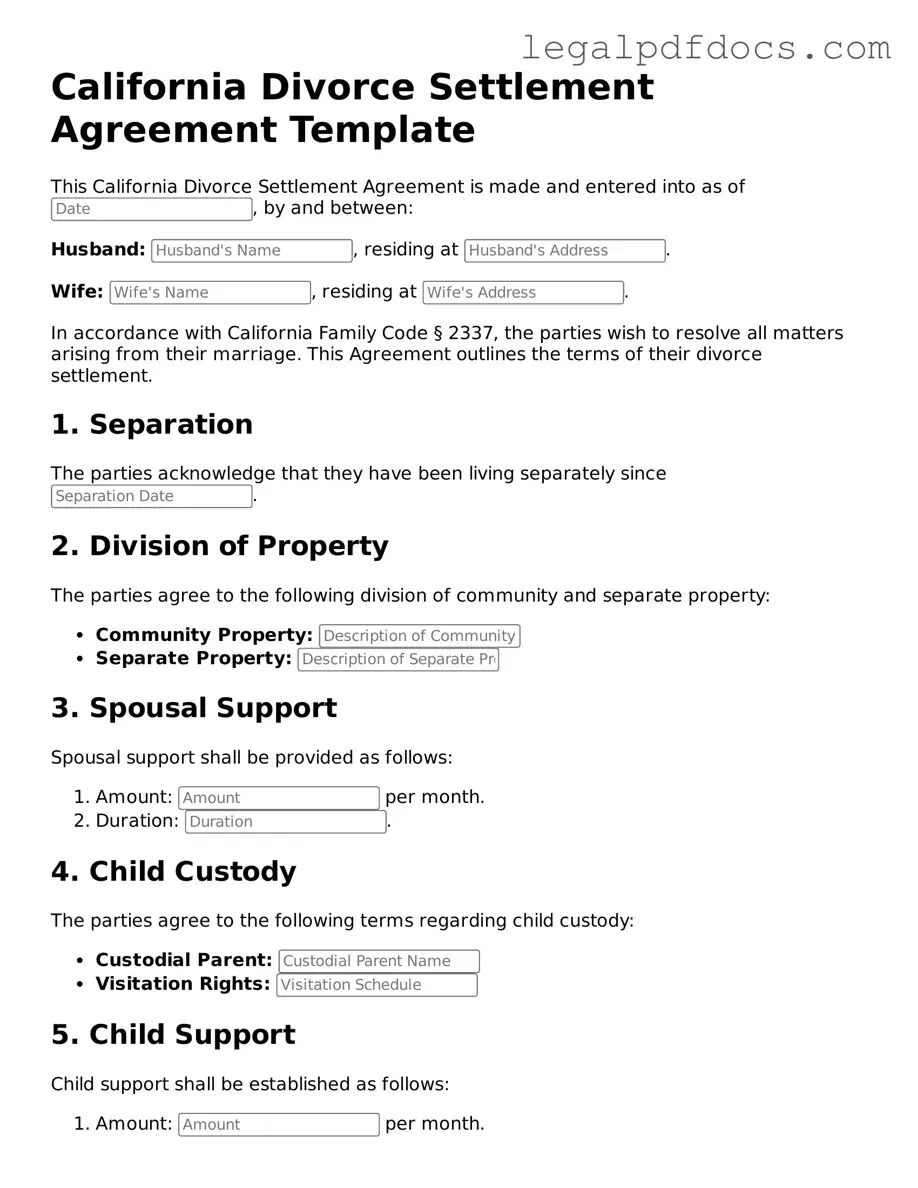Official Divorce Settlement Agreement Form for California
The California Divorce Settlement Agreement form is a legal document that outlines the terms and conditions agreed upon by both parties during a divorce. This form addresses various aspects, including asset division, child custody, and support obligations. Completing this form is essential for finalizing the divorce process, so ensure you fill it out accurately by clicking the button below.
Open Divorce Settlement Agreement Editor Here
